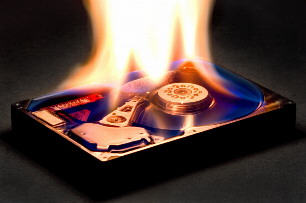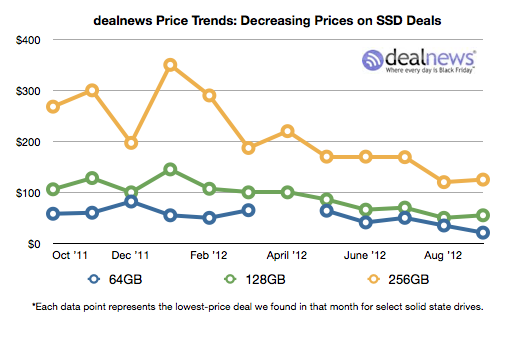
The Death of Spinning Disk
Linus Torvoldas, the founder of Linux, was recently quoted: “Rotating storage is going the way of the dodo. How do I hate thee, let me count the ways. The latencies of rotational storage are horrendous, and I personally refuse to use a machine that has those nasty platters of spinning rust in them.” Is now really the time for SSD?
For a while SSD has been at a price point where it didn’t make 100% for everyone to use SSDs, as it had a premium price tag attached to it. That has all changed in the last 6-12 months, with SSDs continuing to drop in price to the point where they are very much affordable now.
There a number of reasons why now is the time for SSDs:
Price
The prices of SSDs has come significantly over the past 1-2 years, where they are now at a point where they are very affordable to use in a desktop or PC. The pricing is at a point where it makes sense to replace existing spinning disks with SSDs. The only time when spinning disks are now really required now is for slow fast storage where there is a large amount of data being accessed infrequently, and latency is not a concern.
Dealnews.com have put together a graph of prices of SSDs for a 1 year period, and it’s clear to see the continuing downward trend in pricing:

Wear Leveling/Reliability:
Along with price, there have been a raft of improvements in the controllers running the SSDs. The controllers are the piece of software which instruct how data should be accessed and stored on the flash storage. Some of the many improvements include a more stable SSDs (some of the early SSDs on the market got a bad rap for stability issues) as well as enabling more data to be stored on SSDs (unlike spinning disks, SSD drives have a predictable rate at which they fail and can no longer be written to).
Speed:
Since the birth of SSD, this has been one of the major advantages over spinning disks, and this only improves year on year. In comparison the rate at which spinning hard drives improve in speed over time is very small, with very little progress made on speed in the last 5-10 years. SSDs benefit from higher IOPS, higher throughput, and also much lower latency.
Power/Noise:
An added benefit to using SSDs is significantly less power usage, and since there are no moving parts in SSDs they make no noise. Compared with spinning disks, which can make a range of noises depending on the brand and model, this can be a welcoming silence!
In the datacenter less power, can mean a significant saving in both power and space. It allows for much denser environments which are greener option. If high performance is required, SSD can replace a significant amount of spinning disks for a lot less space and power.
But, is SSD the answer to everything? Not really, there are still plenty of requirements for spinning disks! For large amounts of data, SSD still is not economical and spinning disks can be used for NAS style environments where are large amount of slow, cheap storage is required.
When will you be making the move to SSD?
Here at Crucial, we’ve jumped head first into SSD with one of the world’s first all SSDs SANs, and the first cloud provider globally able to offer guaranteed performance in the cloud. Check out details of our Blaze product here.
| Hosting Options & Info | VPS | Web Solutions & Services |
|---|---|---|
